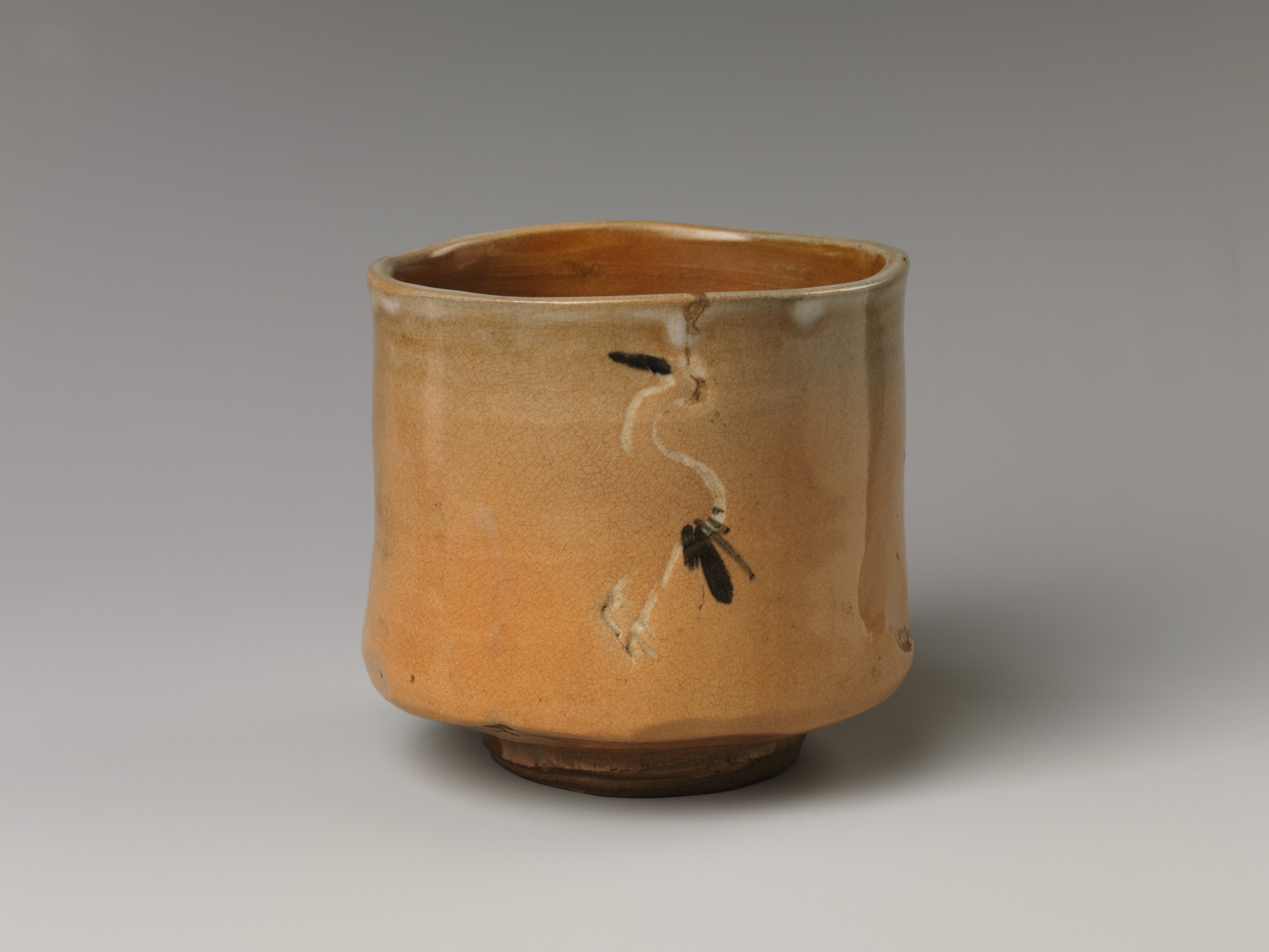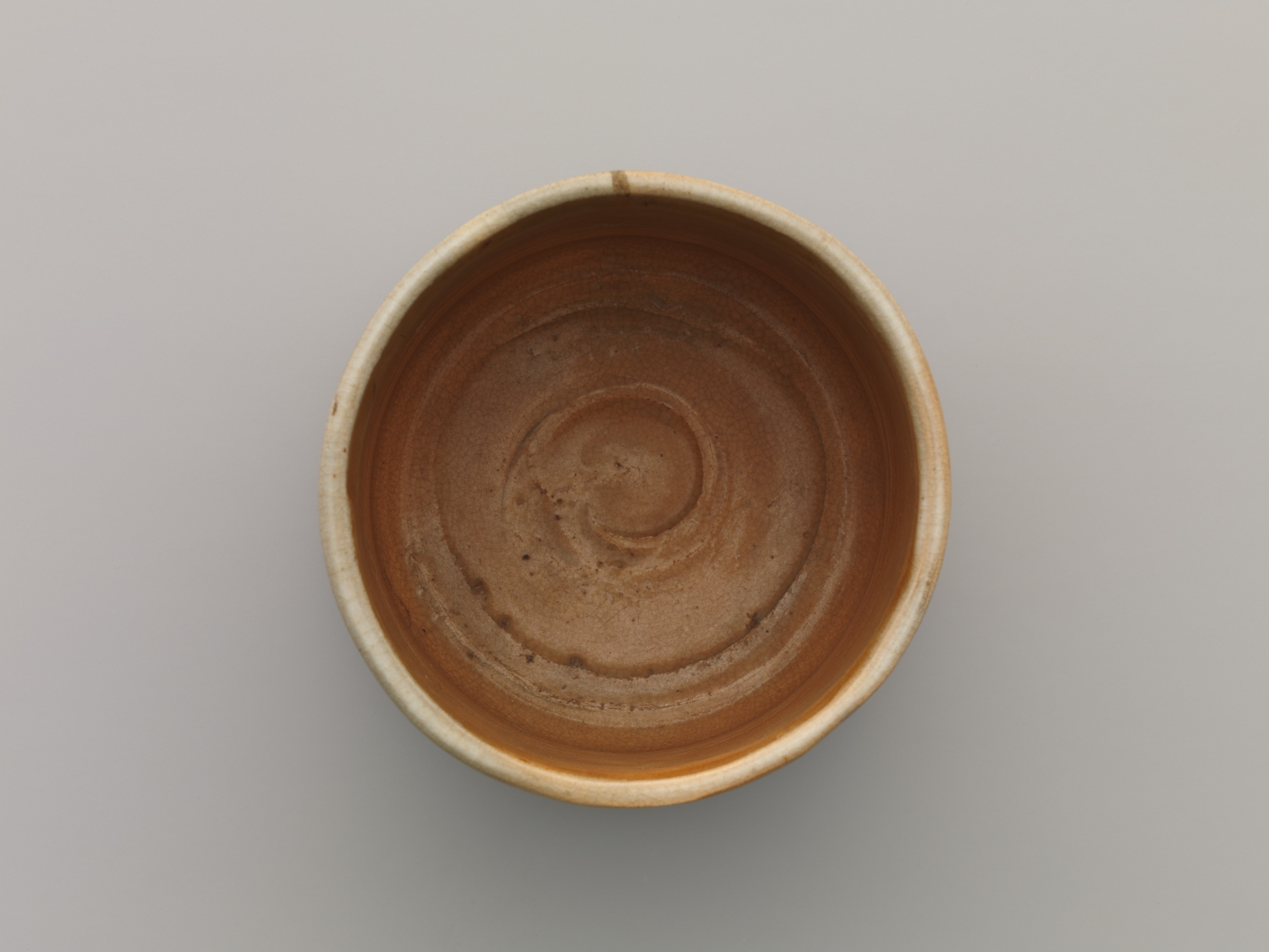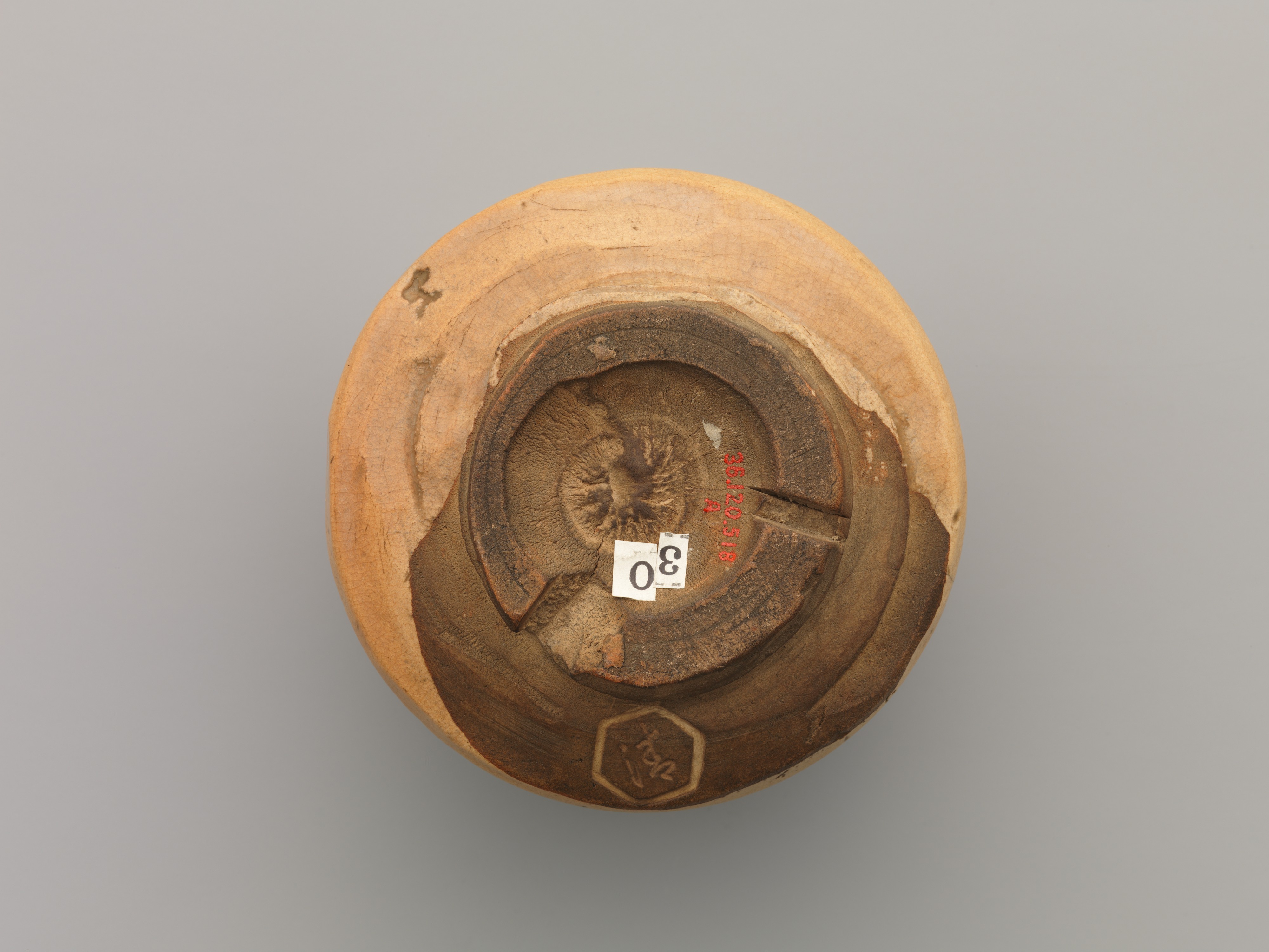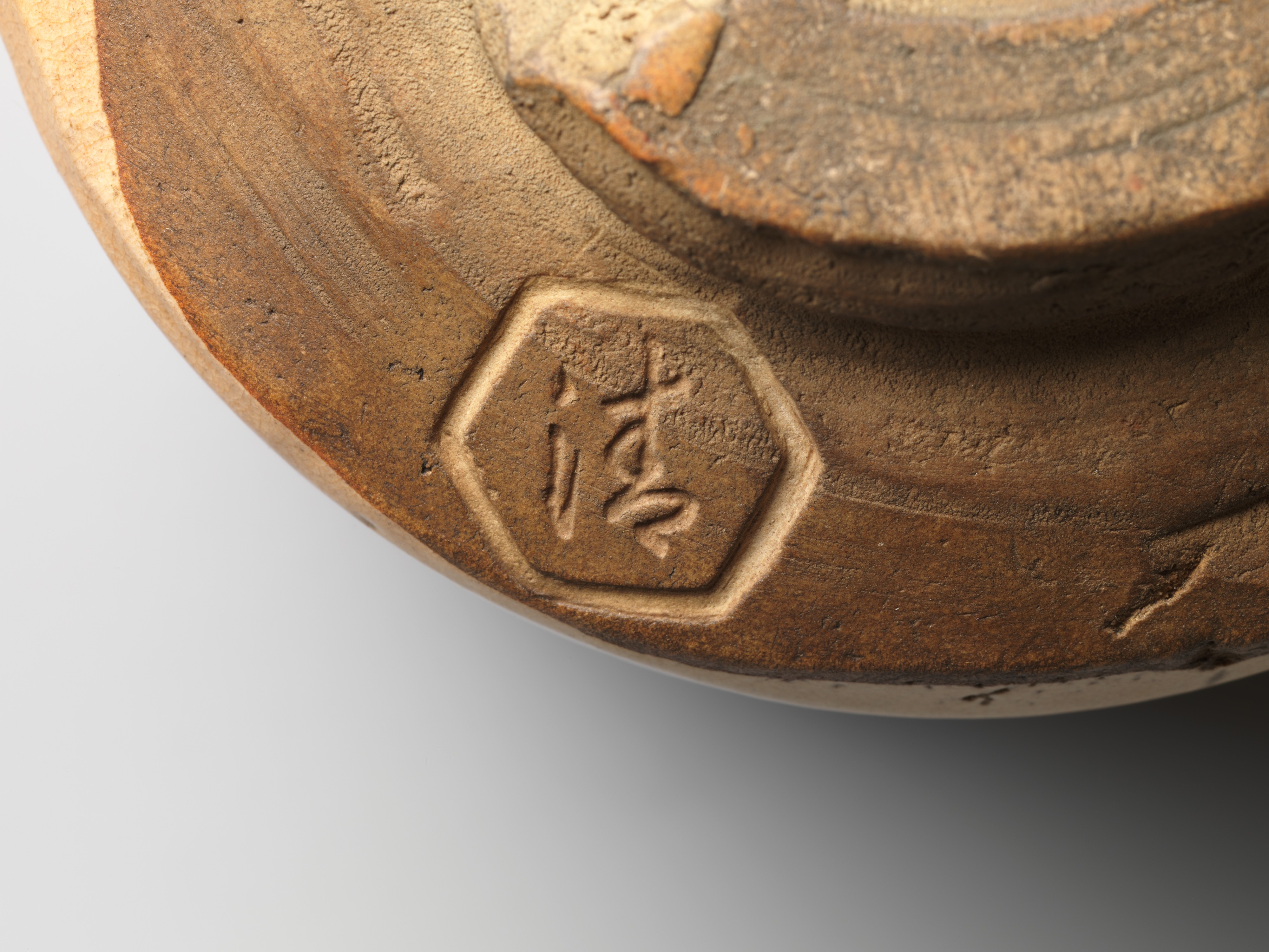Gohon (Korean-Style) Tea Bowl with Cranes
Kiyomizu Rokubei I Japanese
Not on view
The design on this vessel can be traced back to the ubiquitous cranes of Goryeo celadon, which have been filtered here through an Edo-period Japanese sensibility. Rokubei's tea bowl is, in fact, a copy of a late seventeenth century Busan-kiln product (export ware made in Korea according to Japanese specifications), and the model he reprised was itself a nod to earlier prototypes (Goryeo period celadon and fifteenth- and sixteenth-century revivalist celadon exported to Japan). The Kyoto master affirmed his place in this prestigious lineage by literally leaving his mark: his seal is stamped near the base.
Due to rights restrictions, this image cannot be enlarged, viewed at full screen, or downloaded.
This artwork is meant to be viewed from right to left. Scroll left to view more.






